How to Dual Boot MacOS High Sierra Beta & Sierra on Partitions

The macOS High Sierra beta can be installed and dual booted alongside a stable release of MacOS Sierra, El Capitan, or another Mac OS X release. This can be a suitable option for developers, beta testers, and pro users who want to try out the new MacOS 10.13 beta release without overly committing to it, as it leaves the primary stable macOS release intact on the same computer and does not overwrite it. When finished, you will be able to boot between either the beta macOS High Sierra release, or the stable macOS release that already was on the Mac.
This is aimed at advanced users only. Do not modify a partition scheme or install any beta operating system without completely backing up the Mac first with Time Machine or your backup method of choice. Failure to backup may result in permanent data loss.
Remember, beta system software is notoriously unreliable, slow, and problematic, do not run beta system software as a primary operating system and do not install beta system software over any important data.
How to Dual Boot & Install macOS High Sierra Beta to Separate Partition
Note you can initiate this dual boot creation and install process from the current macOS installation, or directly from a macOS High Sierra beta USB install drive too.
- Back up the Mac, do not skip this step
- Download the macOS High Sierra beta installer from the Mac App Store (you will need to be enrolled in the beta testing program)
- Open Disk Utility on the Mac then choose the primary hard drive and go to the “Partition” tab
- Click on the + icon and create a new partition, give it an obvious name “High Sierra” or something similar, and assign it a reasonable amount of space (20GB or more) and click Apply to create the new partition
- Quit out of Disk Utility
- Open “Install macOS 10.13” app from the /Applications folder (or choose the installer from the USB boot drive)
- Go through the installation menus and at the disk selection screen choose “Show All Disks” and then specifically select the new partition you created a moment ago called “High Sierra” – do NOT install over your primary partition
- Install macOS High Sierra beta as usual, when finished macOS High Sierra will boot automatically
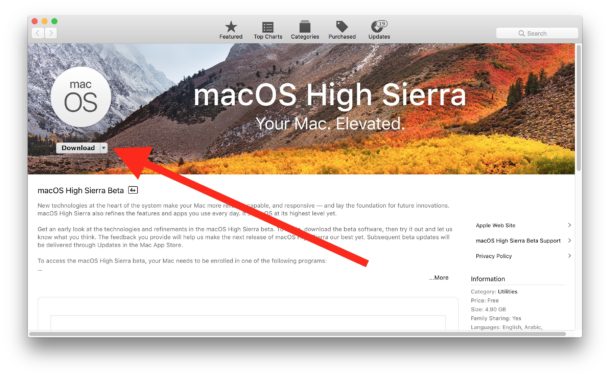
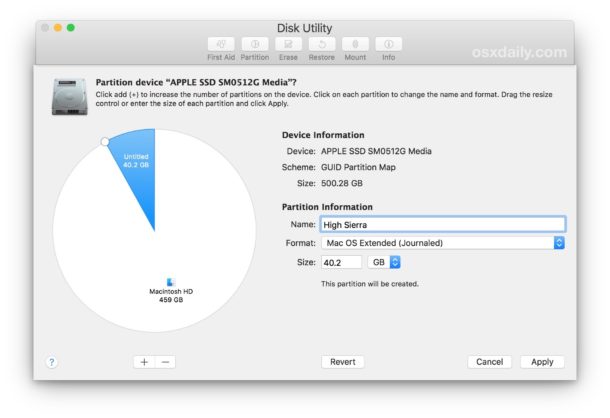
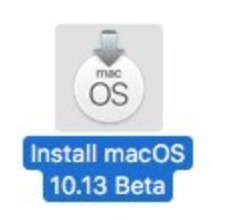

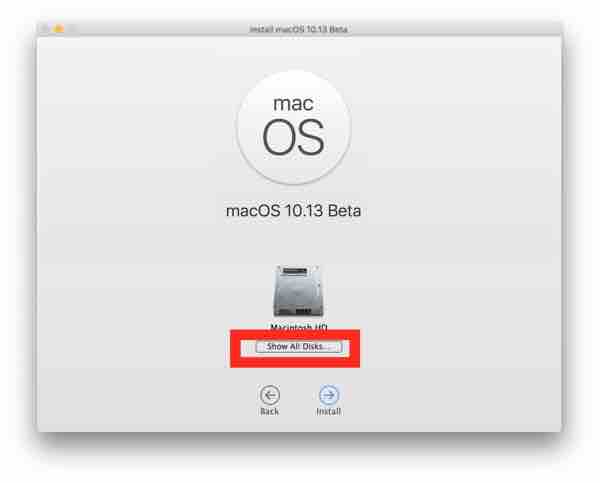
The process is pretty straight forward and is largely the same with macOS High Sierra as it was with most other Mac operating system releases.
Essentially this offers a way to test out the High Sierra beta without overwriting your primary macOS install, each operating system will be self contained on it’s own partition.
Switching Between & Booting High Sierra or the Other Mac OS Release
You can restart and switch between the beta macOS High Sierra release and the regular Mac OS installation anytime with either of these methods:
- Choosing the volume to startup in Apple menu > System Preferences > Startup Disk
- OR by holding down the OPTION / ALT key on system start and selecting the boot volume and operating system to boot
You must reboot the Mac to switch between the High Sierra release and other system software.
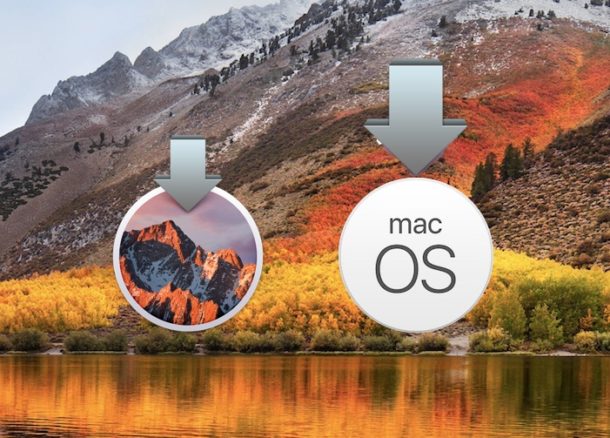
How else can I dual boot macOS High Sierra 10.13 and a stable Mac OS release?
Another option would be to install macOS High Sierra onto a completely different hard drive, or with an external fast SSD drive, and boot from that too. That would be an even safer approach as it does not involve partitioning the primary volume at all.
How do I delete the macOS High Sierra Partition?
You can delete the macOS High Sierra partition at any time, all you need to do is boot into the other Mac OS installation and open Disk Utility, choose the drive and return back to the partition menu, then select the High Sierra partition and click the “-” minus button to remove the partition. You can also do this from a USB boot drive, or from recovery mode.
Do you have any questions, tips, tricks, or advice about dual booting High Sierra and another release? Let us know in the comments below!


I created a High Sierra partition, decided to delete it, but now Disk Utility doesn’t seem to know how to delete the APFS partition and reintegrate it with my Sierra HFS partition. Am I out of luck until the mainstream release, and then reintegrate?
I thought High Sierra required APFS format not GUID.
Also remember folks that High Sierra only works with SSD drives. All other drives are not compatible at this time. I hope that is corrected very soon.
Question: would the APFS in High Sierra do anything to the file system that would produce problems when you boot in Sierra (or El Cap, etc)? I don’t know enough about the file systems to know what to expect here.
I think you are referring to HFS+ not GUID. HFS+ is the older file system that is being replaced by APFS. You can use APFS on hard drives (internal and external) and USB flash drives. I am.
So why does Apple publish in there beta documents HDD based Macs currently cannot be converted to APFS.
iMacs with 3TB of storage currently cannot be converted to APFS. If you are using a late model Mac Portable right now there drives are all SSD Flash based which is the only thing APFS supports right now. Older HDD drives are not supported along with Fusion drives.
I use a Thunderbolt external SSD for testing beta builds of macOS. It works great, and the advantage of doing this is that I can boot any compatible Mac from this drive to test how well it performs with the new version of macOS.
Will this method also wotk for dual boot for other OS like Linux or Windows? Kindly confirm.
Karthi, yes you can dual boot Mac OS with Linux and Windows too, but with both Linux and Windows you will want to partition and then use either the Linux installer (Ubuntu for example) or Boot Camp tool for Windows, this installs necessary boot loaders for those operating systems.